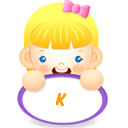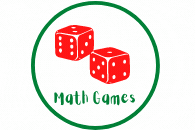Charts for Mathematics: Visualizing Data for Better Understanding
Charts are powerful tools in the field of mathematics, enabling researchers, educators, and students to visualize complex data sets, analyze trends, and gain insights into mathematical concepts. In this article, we will explore the various types of charts used in mathematics, their applications, benefits, and best practices for effective utilization.
Introduction to Charts in Mathematics
In the realm of mathematics, charts serve as graphical representations of numerical data. They provide a visual framework for understanding mathematical concepts and relationships. From simple bar charts to sophisticated scatter plots, charts play a crucial role in data analysis and interpretation. Continue Below>>
Reception worksheets | Year 1 | Year 2 | Year 3 | Year 4 | Year 5 | Year 6 | Year 7 | Year 8 | Multiplication worksheets pdf | Counting to ten |
Preschool Worksheets

Preschool Math Worksheets - Counting, Addition, Subtraction, Geometry, & More. Colorful printable math tests.
Go to pageKindergarten Worksheets

Kindergarten Math worksheets- Addition, Subtraction, Probability, ,Fractions & More. Free math worksheets
Go to page1st Grade Worksheets

1st First Grade Math Worksheets - Counting, Addition, Geometry, Positions & More. First grade math worksheets
Go to page2nd Grade Worksheets

2nd Second Grade Math worksheets- Counting, Addition, Subtraction, Geometry, Positions & More. Grade 2 worksheets
Go to page3rd Grade Worksheets

3rd Third Grade Math Worksheets - Counting, Addition, Subtraction, Geometry, Positions & More. Grade 3 worksheets pdf
Go to page4th Grade Worksheets

4th Fourth Grade Math worksheets- Counting, Addition, Subtraction, Geometry, Positions & More. grade 4 math worksheets
Go to page5th Grade Worksheets

5th Fifth Grade Math Worksheets - Counting, Addition, Subtraction, Geometry, Positions & More. grade 5 math worksheets
Go to page6th Grade Worksheets

6th Sixth Grade Math Worksheets - Counting, Addition, Subtraction, Geometry, Positions & More. Grade 6 math worksheets
Go to page7th Grade Worksheets

7th Seventh Grade Math Worksheets - Addition, Subtraction, Geometry, Positions & More. Grade 7 math worksheets
Go to pageTypes of Charts Used in Mathematics
Bar Charts
Bar charts are used to compare categorical data by representing each category with a bar whose length corresponds to the value it represents.
Line Charts
Line charts display data points connected by straight lines, commonly used to illustrate trends over time or continuous data sets.
Pie Charts
Pie charts represent proportions of a whole by dividing a circle into sectors, each proportional to the quantity it represents.
Scatter Plots
Scatter plots depict individual data points as dots on a two-dimensional coordinate system, useful for visualizing relationships between variables.
Histograms
Histograms display the distribution of numerical data by dividing it into intervals and representing the frequency of values within each interval with bars.
Box Plots
Box plots, also known as box-and-whisker plots, summarize the distribution of data using five key values: minimum, first quartile, median, third quartile, and maximum.
Applications of Charts in Mathematics
Charts find applications across various mathematical disciplines, including statistics, calculus, algebra, and geometry.
Data Representation
Charts provide a clear and concise way to represent numerical data, making it easier to identify patterns and trends.
Analysis of Trends
By visually analyzing charts, mathematicians can discern trends and patterns that may not be immediately apparent from raw data.
Comparisons Between Data Sets
Charts facilitate comparisons between different data sets, allowing researchers to identify similarities, differences, and correlations.
Probability Distributions
In probability theory, charts are used to illustrate probability distributions and visualize concepts such as mean, median, and standard deviation.
Correlation Analysis
Charts help mathematicians analyze the relationship between two or more variables, determining whether they are positively, negatively, or neutrally correlated.
How to Create Charts in Mathematics
Creating charts in mathematics involves several steps, starting from data collection and organization to selecting the appropriate type of chart and customizing it for clarity.
Data Collection and Organization
Before creating a chart, it's essential to collect relevant data and organize it in a structured format.
Choosing the Appropriate Type of Chart
Depending on the nature of the data and the objective of the analysis, mathematicians must choose the most suitable type of chart.
Using Mathematical Software for Chart Creation
Mathematical software such as MATLAB, Mathematica, and Python's Matplotlib library are commonly used for creating charts with precision and flexibility.
Customizing Charts for Clarity and Effectiveness
To ensure the chart effectively communicates the intended message, mathematicians should customize elements such as axis labels, titles, colors, and fonts.
Benefits of Using Charts in Mathematics Education
In the realm of mathematics education, charts offer numerous benefits for both teachers and students.
Enhanced Understanding of Mathematical Concepts
Visual representations help students grasp abstract mathematical concepts more easily than text or equations alone.
Visual Reinforcement of Abstract Ideas
Charts provide visual reinforcement of abstract mathematical ideas, making them more tangible and accessible.
Engaging and Interactive Learning Experiences
Interactive charts and visualizations engage students in active learning, encouraging exploration and experimentation.
Facilitation of Problem-Solving Skills
Analyzing and interpreting charts cultivates critical thinking and problem-solving skills essential for success in mathematics and beyond.
Examples of Using Charts in Mathematics
Analyzing Statistical Data
Charts are commonly used to analyze statistical data, such as population trends, economic indicators, and survey results.
Graphing Functions and Equations
In calculus and algebra, charts are used to graph functions and equations, visualizing their behavior and properties.
Representing Geometric Figures
Charts can represent geometric figures such as lines, curves, circles, and polygons, aiding in geometric analysis and visualization.
Visualizing Mathematical Relationships
Charts help visualize mathematical relationships, such as direct and inverse proportions, exponential growth, and logarithmic decay.
Best Practices for Interpreting Charts in Mathematics
To interpret charts accurately, mathematicians should adhere to certain best practices.
Understanding Axis Labels and Scales
Axis labels and scales provide crucial context for interpreting charts, ensuring accurate analysis and understanding.
Analyzing Data Points and Trends
Thoroughly analyzing data points and trends enables mathematicians to draw meaningful conclusions from charts.
Comparing Multiple Data Sets
When comparing multiple data sets, mathematicians should consider factors such as scale, units, and context to avoid misinterpretation.
Recognizing Outliers and Anomalies
Identifying outliers and anomalies in charts is essential for detecting errors, outliers, and irregularities in the data.
Common Mistakes to Avoid When Using Charts in Mathematics
While charts are valuable tools, certain pitfalls should be avoided to ensure accurate and meaningful representation of data.
Misleading Visualizations
Misleading visualizations, such as truncated axes or distorted scales, can lead to misinterpretation and erroneous conclusions.
Incorrect Data Representation
Inaccurate or incomplete data representation can distort the true picture and compromise the integrity of the analysis.
Overcomplicated Chart Designs
Overly complex chart designs with excessive elements can overwhelm viewers and detract from the main message.
Ignoring Mathematical Principles
Failing to adhere to mathematical principles such as proportionality, symmetry, and consistency can result in flawed charts.
Future Trends in Using Charts for Mathematics
As technology continues to evolve, the field of mathematical charting is poised for significant advancements.
Integration of Technology in Chart Creation
Advances in technology will enable the seamless integration of mathematical software with chart creation tools, enhancing efficiency and accuracy.
Development of Interactive Charting Tools
Interactive charting tools will offer users greater flexibility and interactivity, allowing for real-time data exploration and analysis.
Incorporation of Big Data Analytics
The proliferation of big data analytics will lead to the development of sophisticated charting techniques capable of handling vast and complex data sets.
Advancements in Data Visualization Techniques
Innovations in data visualization techniques will result in more immersive and dynamic charts, enhancing the understanding and interpretation of mathematical concepts.
Conclusion
In conclusion, charts are indispensable tools in the field of mathematics, enabling researchers, educators, and students to visualize data, analyze trends, and gain insights into complex mathematical concepts. By understanding the different types of charts, their applications, and best practices for interpretation, mathematicians can harness the power of visual representation to enhance learning, research, and problem-solving.
FAQs
1. How do charts enhance understanding in mathematics?
Charts provide visual reinforcement of abstract mathematical concepts, making them more tangible and accessible to students.
2. What are some common mistakes to avoid when using charts in mathematics?
Common mistakes include misleading visualizations, incorrect data representation, overcomplicated chart designs, and ignoring mathematical principles.
3. What role will technology play in the future of mathematical charting?
Technology will facilitate the integration of mathematical software with chart creation tools, leading to more efficient and accurate charting processes.
4. How can educators incorporate charts into mathematics instruction?
Educators can integrate charts into mathematics instruction by using interactive visualizations, real-world examples, and hands-on activities to engage students.
5. What are some emerging trends in data visualization for mathematics?
Emerging trends include the development of interactive charting tools, advancements in big data analytics, and innovations in data visualization techniques.
![]() 8th Eight Grade Math Worksheets - Polynomials, Algebra, Geometry, Pythagorean Theory, & more
8th Eight Grade Math Worksheets - Polynomials, Algebra, Geometry, Pythagorean Theory, & more
![]() Coloring and Arts - Printable coloring worksheets for kids - Pre K to 6 th grade
Coloring and Arts - Printable coloring worksheets for kids - Pre K to 6 th grade
![]() Math Puzzles in PDF Printable Format - Secret trails, Across downs, Number Patterns & more
Math Puzzles in PDF Printable Format - Secret trails, Across downs, Number Patterns & more
![]() Math Board Games in PDF Printable Format - Zombie, Crocodile, Football, Pirate games & more
Math Board Games in PDF Printable Format - Zombie, Crocodile, Football, Pirate games & more
 This exercise will help kids practice Math in a fun way. Kids related to games very well. From preschool / kindergarten to sixth grade levels of math games. There are games for the following topics:
This exercise will help kids practice Math in a fun way. Kids related to games very well. From preschool / kindergarten to sixth grade levels of math games. There are games for the following topics:
The games include among other : memory games, Walk the plank, Fling the Teacher, En Garde Duel, Basketball Game, Penalty Shoot and more.
